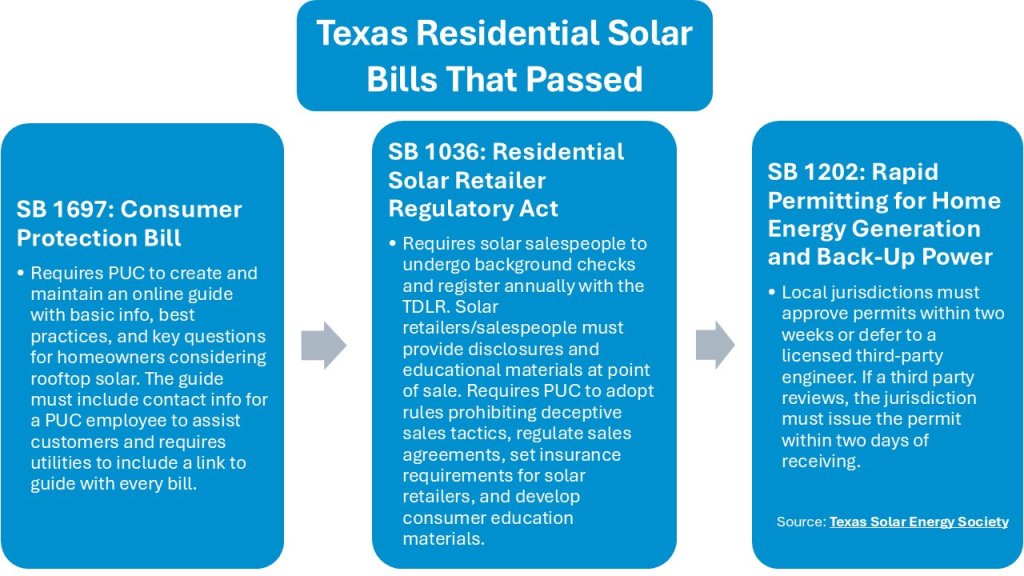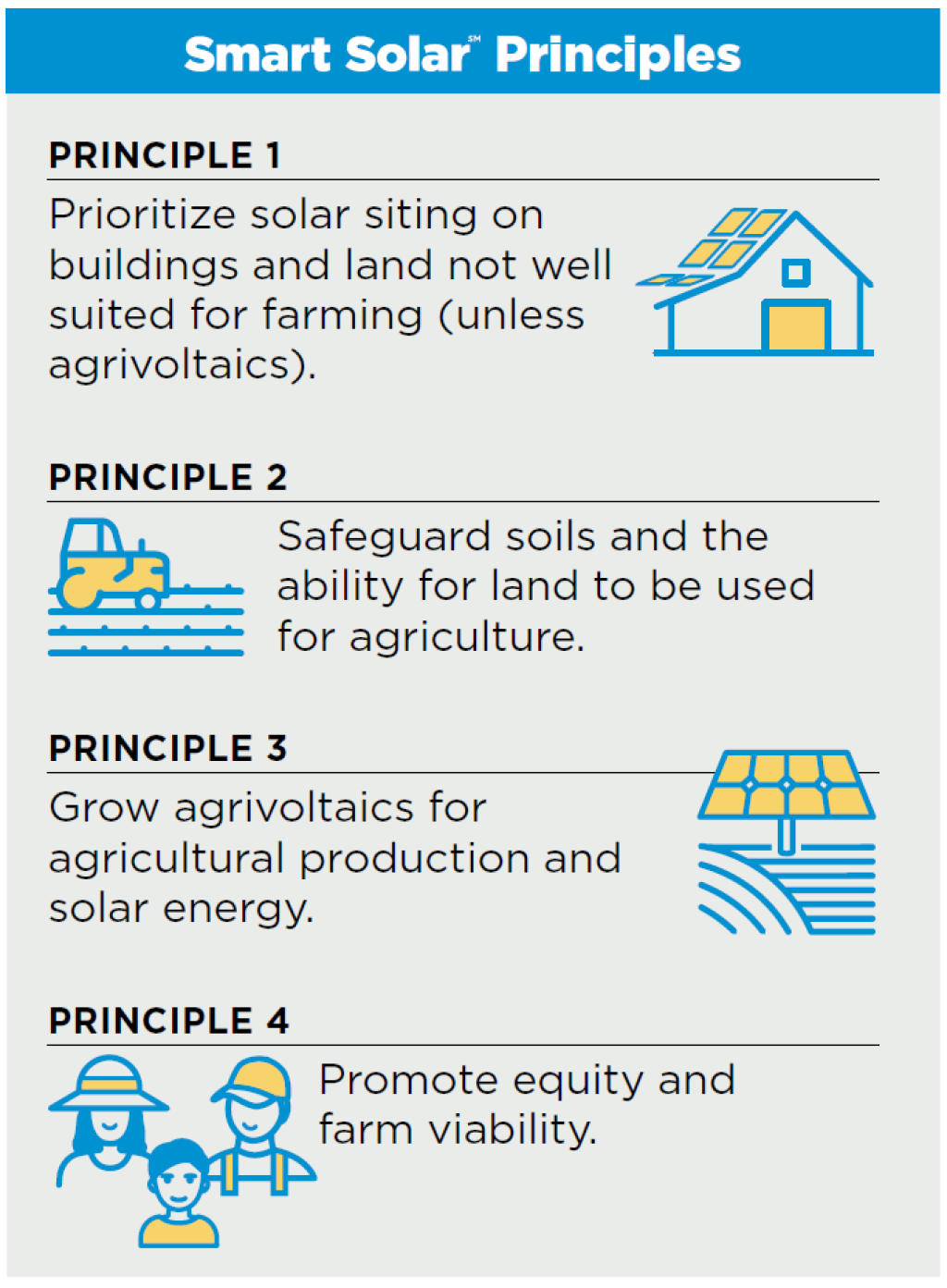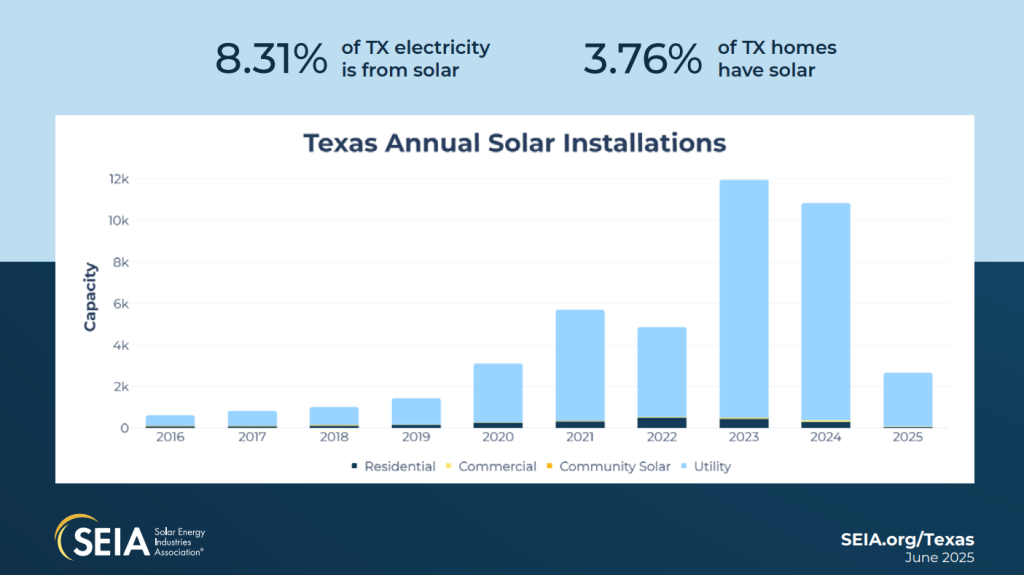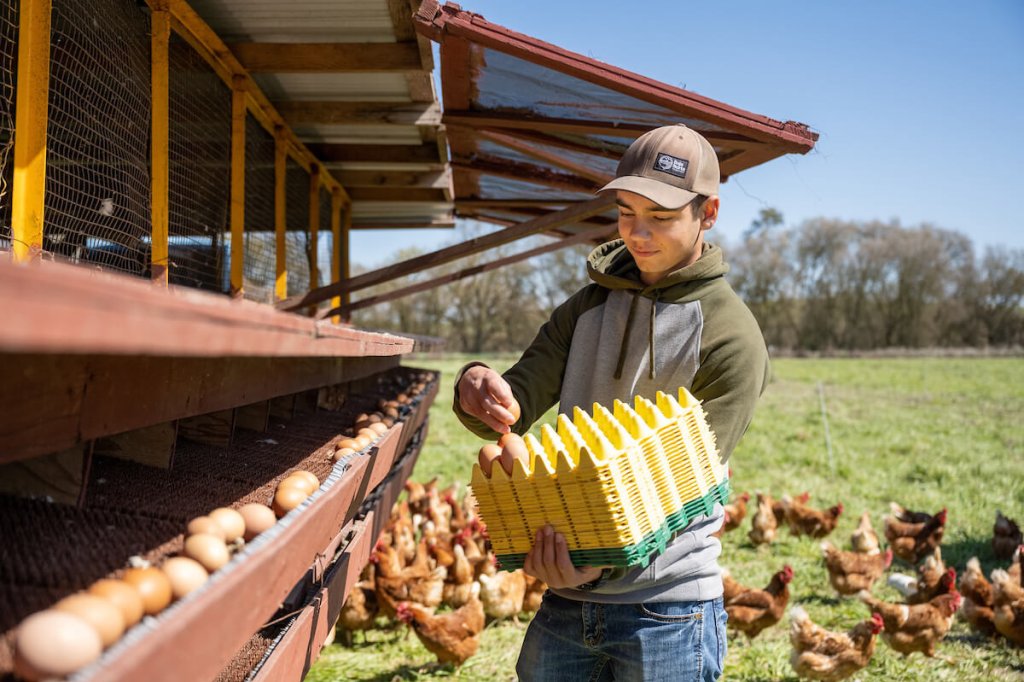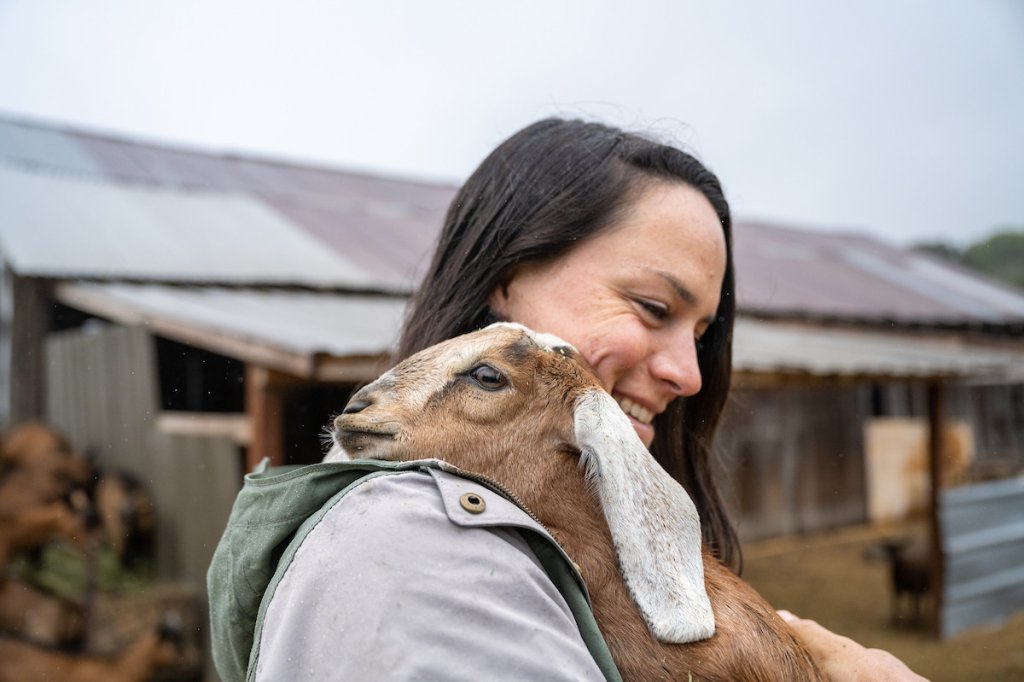Balancing Energy and Agriculture in Texas
The 2025 legislative session saw several controversial energy bills that, if passed, many in the industry believed would negatively impact the growth of renewables in Texas and limit the state’s ability to meet rising energy demand. Although most attention went to high-profile bills that were ultimately unsuccessful, several bills did pass that will benefit homeowners by strengthening consumer protections and streamlining the permitting process for solar and energy storage.
Having worked in the residential solar industry, I saw firsthand how burdensome permitting, deceptive sales practices, and limited consumer protections can slow solar adoption. That experience led me to create a solar guide specifically for farmers and ranchers considering on-farm solar. Similar to SB 1697—Consumer Protection Bill— and its Rooftop Solar Consumer Protection Guide, my goal was to fill an information gap and help agricultural producers make informed decisions about whether solar was right for their operation.
These bills present an important opportunity to support consumers and small-scale solar development that aligns with the first principle of American Farmland Trust’s (AFT) Smart SolarSM Initiative: Prioritize solar siting on buildings and land not well-suited or farming (unless agrivoltaics). By siting solar on the built environment, we can relieve some pressure on our agricultural lands.
However, our demand for energy in Texas and across the country is, and will continue to be, much more than what rooftops can supply. While small-scale, distributed solar plays a valuable role, we will also need large, utility-scale solar projects. These have been critical to meeting our growing energy demand, supporting grid reliability, and keeping energy costs down.
Why Texas Needs Utility-Scale Solar
Texas is growing rapidly, increasing demand for a host of resources. Driven by the electrification of industry, population growth, A.I. data centers, cryptocurrency operations, and extreme weather, experts are projecting our demand for power to possibly double by 2030. That’s why Pablo Vegas, the CEO of the Electric Reliability Council of Texas (ERCOT), has emphasized the need for all energy resources available.
According to a report from Aurora Energy Research, commissioned by the Texas Association of Business, restricting renewables could increase power prices by 14% and leave over 600,000 homes without electricity in extreme weather events. The report concludes that restricting renewable expansion in Texas would not only raise costs but also undermine grid reliability.
The amount of solar generation and batteries added over the last couple of years has helped Texas meet record demand while keeping prices down. The state now leads the nation in not only wind-powered electricity generation, but also utility-scale solar, installing more new solar capacity than any other state over the last several years.
Still, this significant growth of solar and accompanying changes in land use has raised concerns, particularly around the fragmentation of private and working land and the impacts on wildlife habitat. But with thoughtful planning, solar installations can enhance rural areas by supporting ecosystem services, generating consistent lease payments for landowners, and helping keep working lands working.
Preliminary results from an AFT survey of nearly 200 Texas farmers, ranchers, and landowners in late 2024, found that 49% support building Texas solar projects on farm or ranchland, while 9% expressed conditional support if agricultural production is maintained, wildlife habitat is protected, and marginal or least productive land is used.
Public sentiment is also strong. A recent poll by Conservative Texans for Energy Innovation (CTEI) shows that Texans consistently support the growth of clean energy, with increasing recognition of its consumer benefits. Of the four surveys CTEI has commissioned to date, these numbers are the highest they’ve been, with bipartisan support. Overall, 84% of Texans support accelerating clean energy development, including 90% of Independents and 75% of Republicans.
Agriculture Is Hurting—Renewables Can Help
Farmers in Texas are facing mounting pressures. The 2022 USDA Census of Agriculture shows Texas lost nearly 18,000 farms and over 1.6 million acres of farmland between 2016-2022. Since then, drought, low commodity prices, generational transition, and market uncertainty are adding additional stress.
Over the past three years, Texas has also led the nation in agricultural losses, nearly $15 billion, from weather disasters. According to AFT’s Farms Under Threat 2040 research, Texas is the most at-risk state in the U.S. for farmland loss due to real estate development, placing further pressure on our agricultural lands. In fact, Texas is home to eight of the twelve most threatened US counties for farmland loss and projected to lose the most farmland by 2040 than any other state.
Meanwhile, renewable energy offers a lifeline.
Solar leases provide consistent, long-term revenue streams—something rare in agriculture. Done right, that revenue can support farm viability, keeping the land in agricultural production and preserving multi-generational family farms. Even without agrivoltaics, solar offers a critical financial buffer in a volatile industry. Dr. Joshua Rhodes estimates that renewable energy and storage projects in Texas will generate nearly $50 billion in lifetime landowner payments and local taxes, benefiting over 75% of counties across the state.
That money helps fund schools, rural infrastructure, and essential county services.
Where do we go from here?
All energy sources, whether traditional or renewable, can be improved through smart, sensible policies that help us produce the power we need while also protecting our land, wildlife, and agricultural resources. Instead of unfairly singling out renewable energy, as many bills last session did, we should focus on solutions that allow projects like solar to be developed responsibly.
Texans want more clean energy, but they also want it done right. The Legislature’s recent actions to support rooftop solar for homeowners are a good start. But more can be done to support proactive and collaborative utility-scale development.
We have clear opportunities to:
Steer solar development to preferred sites — like rooftops, contaminated lands, and marginal or less productive farmland — using data-informed tools like The Nature Conservancy’s Site Renewables Right, AFT’s Farms Under Threat 2040, and collaborative models like Washington State’s least-conflict siting approach.
Expand development of agrivoltaic projects — the pairing of solar energy generation with agricultural production— through more research, pilot projects, incentives, and policy support.
Agrivoltaics is gaining momentum as a way for solar energy to complement and support American agriculture. Oklahoma recently considered the Oklahoma Agrivoltaics Act and the American Farm Bureau’s 2025 Policy Book endorses solar development that includes verified shared agricultural use. Yet agrivoltaics still account for less than 5% of solar capacity in the U.S. This reveals a huge opportunity to expand this innovative approach to reduce conversion of agricultural land out of production and benefit local farm economies.
Texas has a chance to lead; to help guide this energy expansion that balances the diverse needs of the conservation, agriculture, and solar industries, all without disadvantaging renewables.
Whether through incentivizes for solar siting on marginal or less productive land or expanding agrivoltaics opportunities, Texas can support its agricultural producers just as it has supported homeowners. We need a future with both renewable energy and thriving farms.

